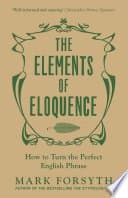Mastering the Craft of English: Delving into its Nuances and Subtleties
Explore the nuances of English to deepen understanding and improve conversational skills.

Books Featured in This Article
Explore the books discussed

Mastering the Craft of English: Delving into its Nuances and Subtleties
Understanding the subtleties and nuances in the English language can be a challenging yet rewarding journey. It's a path filled with the soft whispers of expressions, hidden meanings, and the rhythmic flow of conversations. Unlike the structured language taught in academic settings, casual and conversational English is filled with idiomatic expressions, colloquialisms, and subtle tone changes that can be difficult to pick up for non-native speakers or even native speakers looking to deepen their understanding. So, how do you reach that level of mastery?
The Power of Context
"Context is king in the realm of language; it can turn words into poetry or a puzzle."
When embarking on this journey, understanding context becomes your compass. It's about interpreting nuances like a language sleuth. Imagine listening to a jazz performance where every note takes on a different emotion, depending on the current vibe. In English, the same principle applies. To practice, engage in conversations with native speakers and observe the context in which phrases or words are used. Pay special attention to how mood, setting, and the relationship between speakers affect word choice and tone.
Idiomatic Expressions: The Heart of the Matter
"Idioms are the soul of a language, wrapping profound meanings in ordinary words."
Idioms are the magical spells of English, turning mundane expressions into colorful imagery. They're the tricky guardians of conversational English, making native-like fluency tantalizingly complex. Take, for instance, phrases like "raining cats and dogs" or "kick the bucket"—their meanings leap beyond their literal interpretations. If you're fascinated by how native language itself can influence the acquisition of these expressions, delve into resources like "The Idiom Principle and L1 Influence".
The Melody of Tone and Mood
"Change the tone, and you change the story; alter the mood, and you alter the experience."
Tone and mood are the invisible artists of language, painting each communication with emotion and intent. Imagine reading a gripping novel, where each character feels vibrant through mere words. Watching English language movies or series with subtitles is like attending a masterclass in emotional storytelling. By hearing the rise and fall of tone, you become attuned to the subtle shift that mere words may not convey.
Tools of the Trade: Books and Resources
"A book is your travel ticket to the realms of eloquence and expression."
Books are the timeless guides on your quest towards mastering English's subtleties. For those beginning this rewarding exploration, "The Elements of Eloquence: How to Turn the Perfect English Phrase" by Mark Forsyth offers delightful insights. It's a journey into the heart of eloquence, unveiling the art of constructing captivating English phrases. Besides books, language learning apps and online platforms bring learning alive with real-time conversations.
Practice, Perseverance, and Progress
"Practice may not make perfect, but it will surely make you fluent and confident."
The mantra for mastering English is simple: practice, and then practice some more. Regular exposure to varied linguistic contexts enriches your understanding, transforming insights into intuition. Language meet-ups or online groups dedicated to conversational practice can be your arenas of real-life practice. Engage wholeheartedly, and you will see progress etched in every exchange.
While mastering the nuances of the English language may take time, consistent practice and the right resources can make this journey smoother and enjoyable. Stay curious, observant, and always open to learning from every interaction. Let each conversation be a stepping stone towards eloquence, lifting the veil on the rich tapestry of the English language.
Key Takeaways
Pros
- Understanding the nuances of English enhances conversational skills and deepens cultural comprehension.
- Engaging with native speakers and varied contexts improves language fluency and confidence.
- Using resources like specific books and language apps aids in mastering the subtleties of English.
- Regular exposure to idioms and tone changes refines interpretative and expressive abilities.
Cons
- Mastering English nuances can be challenging, especially for non-native speakers.
- Learning idiomatic expressions may take time due to their non-literal nature.
- Understanding tone and mood changes requires consistent practice and exposure.
- Finding adequate real-life practice opportunities can be difficult for learners.
Frequently Asked Questions
About the Author

Book Junkie
Your go-to source for book reviews and recommendations.
You Might Also Like
Related Books
Related Articles

Transformative Reads for Teens: Navigating Life at 17
Discover the power of literature with our curated list of essential books for 17-year-olds. From fiction that inspires self-discovery to empowering non-fiction, these reads provide guidance and comfort during the tumultuous teen years. Uncover the wisdom

Unlocking the Secrets of Dark Academia: A Must-Read List
Dive into the enchanting realm of dark academia with our curated list of gripping novels that explore obsession, psychological intricacies, and haunting atmospheres. Perfect for readers seeking literary adventures akin to films like *Kill Your Darlings* a

Unlocking New Chapters: Inspiring Books for Readers in Their 50s
Discover a curated list of transformative fiction and non-fiction books designed for readers in their 50s. Embrace change, find inspiration, and celebrate life's possibilities with these insightful reads.

Unlocking the Secrets of Monastic Life: 12 Novels Rich in Religious Intrigue
Dive into the captivating world of ancient monasteries and religious power struggles through our curated selection of novels. Discover tales that will enrich your understanding of history while satisfying your love for literary intrigue.



